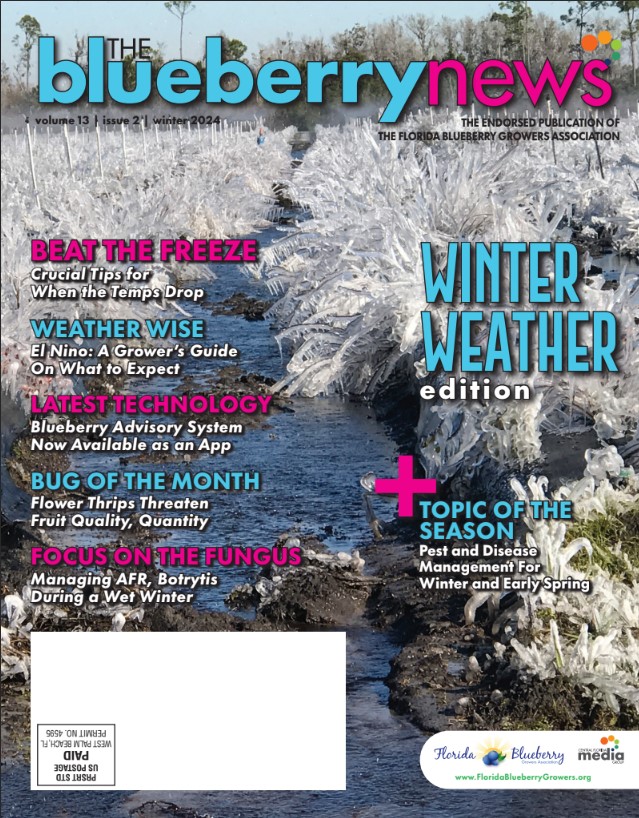Newer Acaricides Effective in Fighting Blueberry Bud Mite
The blueberry bud mite (Acalitus vaccinii (Keifer), is an important pest of southern highbush blueberry in Florida. It belongs to a group of microscopic mites known as eriophyid mites. Adults are about 200 microns long, cigar-shaped, wormlike in appearance, transparent and mostly colorless, and disperse primarily by air. All four life stages of the blueberry bud mite live together in large clusters within the scales of the blueberry bud and reproduce there rapidly, with each female laying up to 200 eggs. The length of time to mature from egg to adult is approximately 15 days at 66°F (19°C). The bud mite population has been observed to peak as early as February in Florida, then decline during the hot summer months of June through September. During fall and early winter, all four life stages can be present in low numbers between the scales of dormant floral buds.
DAMAGE AND ECONOMIC IMPORTANCE
Bud mites remain almost entirely within the protective scales of the bud, feeding on the epidermal areas of developing leaf, floral parts, and fruit. While feeding they transfer a substance or toxin that causes the bud tissue to become roughened and blistered in appearance. Persistent feeding by large numbers of mites results in reddening and swelling of the base of the bud scales, which can cause a rosetted appearance (Figure 1a and 1b). The bud may dry out and turn brown due to mite feeding and fail to open. Flowers and berries developing from buds with mite feeding injury usually have small blisters and pimples (Figure 2). Summer bud mite generations cause slower leaf growth, and this reduced vegetative growth can impact the following year’s crop.
Figure 1. Rossetted and desiccated blueberry buds caused by feeding of blueberry bud mite
Credit: Elke Weibelzahl
Figure 2. Pimpled blueberry developing from floral bud infested with blueberry bud mites
Credit: Elke Weibelzahl
DETECTION
From January through May the presence of blueberry bud mites should be relatively easy to detect by looking for the distinctive red blisters on bud scales, flowers, or fruit. From June through December, bushes exhibiting desiccated or swollen buds may harbor blueberry bud mites. These symptoms may be noticed first since the mites are not visible without magnification. Infestations can be confirmed by examining the scales of dissected buds under a microscope at 40 X magnification. Some symptoms of blueberry bud mite infestation (e.g., desiccated buds) can be confused with winter injury or hydrogen cyanamide damage.
MANAGEMENT
Because of their nature of feeding and breeding within the blueberry buds, blueberry bud mites are difficult to control using acaricides and can be devastating to plantings if populations are allowed to develop in the fields. However, some of the newer acaricides (including Magister and Portal) have shown some effectiveness in managing bud mites. Reduced-risk pesticides, such as horticultural oils, are less hazardous and can perform with high efficacy. Hirsutella thompsonii, a fungal biocontrol agent with some effectiveness on mites, can also play a role in managing bud mite populations. Management practices for the control of blueberry bud mites include pruning of older branches and removal of infected branches.
CREDIT
DR. OSCAR LIBURD, Professor and Program Leader, Fruit and Vegetable Entomology,
UF/IFAS
& DOUG PHILLIPS, Blueberry Extension Coordinator, UF/IFAS





